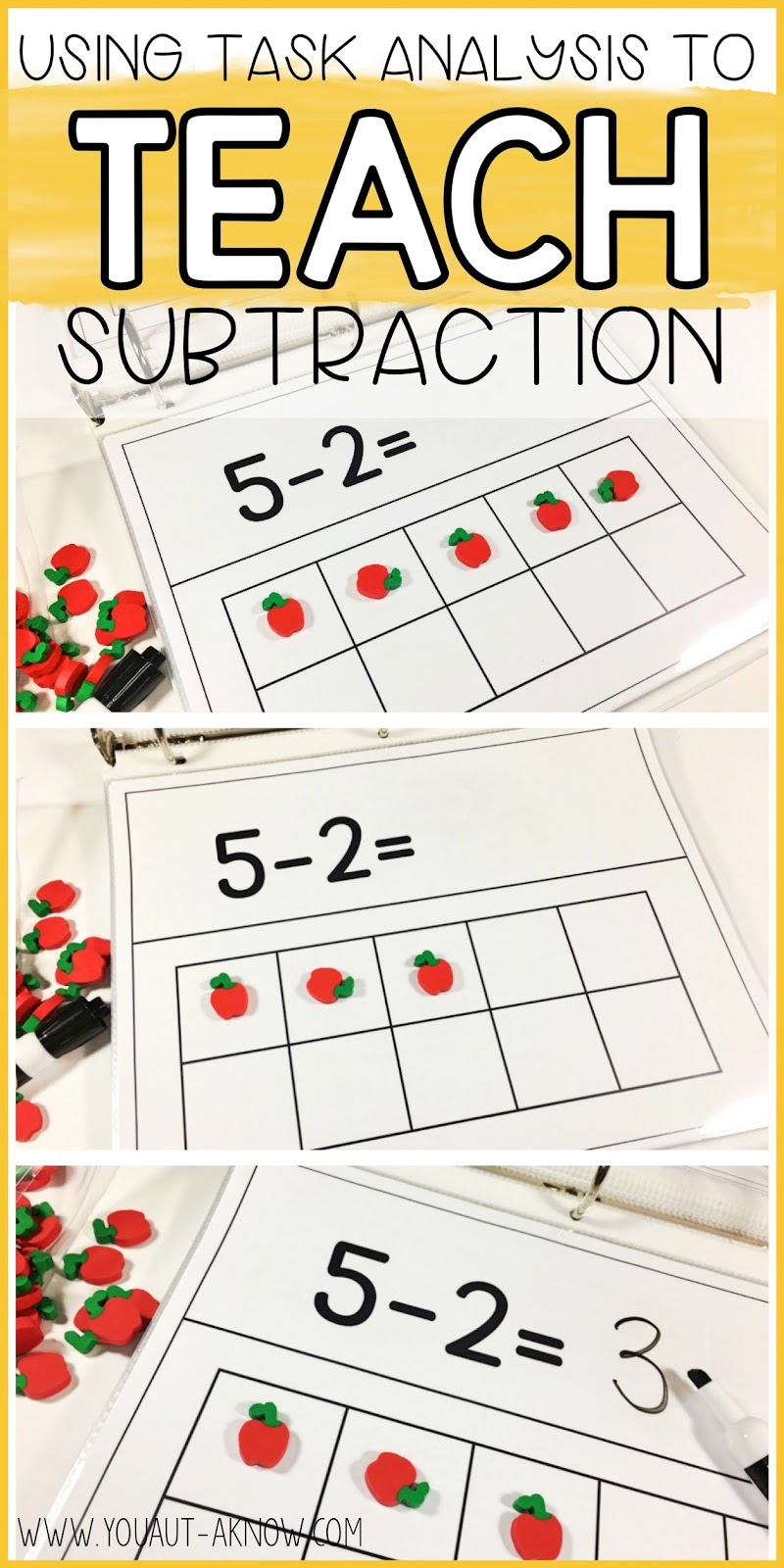So I’ve been talking a lot about Task Analysis lately. I have shared how amazing it is for teaching Functional Routines in the classroom. That’s how I started using Task Analysis back when I was potty training a student in my first year of teaching. It wasn’t until a few years later that I realized what an amazing tool it could be for teaching academic skills, too!
This is a step by step walk through of how I teach subtraction to students using Task Analysis in my classroom. First, I create my data sheet by determining which steps will be needed to complete the task. In this case, I decided there are 4 steps in completing a subtraction fact. The steps are:
I took that information and added it into a Task Analysis Data sheet I developed. When I start teaching students to subtract using Task Analysis I prompt the entire chain making sure students are being reinforced when completing problems.
These are the steps I have laid out that students will complete when learning how to subtract. You can see the student first put on the 5 erasers, then removed 2. We then counted the remaining erasers and wrote what was leftover.
Once I have introduced a prompt to my student it is important that I begin fading that prompt immediately. I don’t want my student to become prompt dependent. The best way to avoid this is to slowly fade back the prompts you are using. I tend to like to fade from the last step in the chain to make sure students are successful. Always remember to pair this with reinforcement. We want students to associate all those good things with the task they are completing.
I continue with these lessons until my students are 100% independent in 5/5 trials over 2-5 days (depending on the student) and then I start generalizing these skills in the classroom and across all settings.
Are you ready to dive in to Task Analysis for teaching academic skills?










